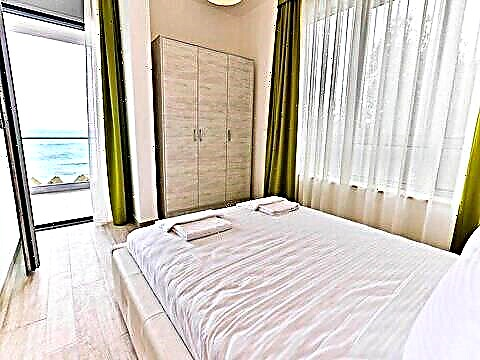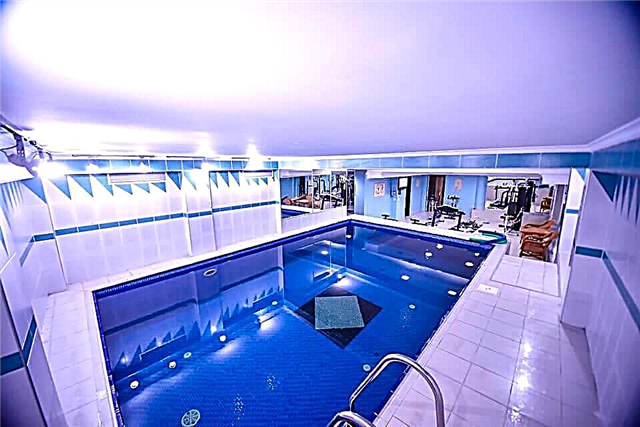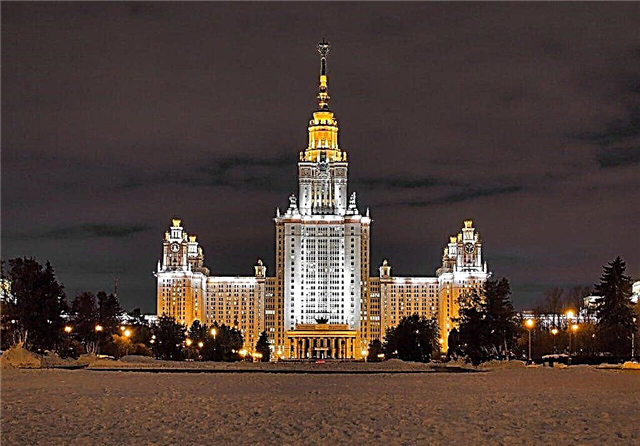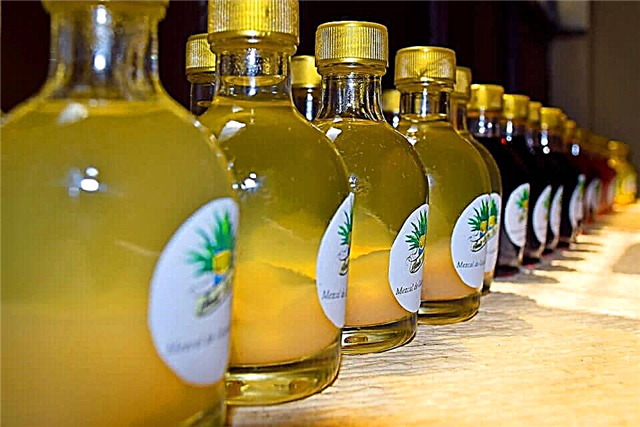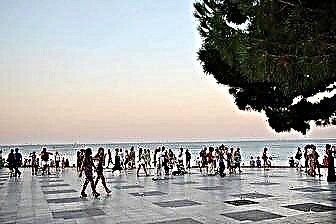Yalta is considered the recognized resort capital of the Crimea. The city is located on the South Coast - the most picturesque place on the peninsula. It has the largest number of sunny days a year, the most beautiful natural landscapes and the most salubrious air on the entire coast.
Big Yalta has a unique charm of the noble era of the 19th century. It is surrounded by palaces on all sides, classic mansions with columns are lined up along the embankment, city streets are buried in the unique aroma of pine cypress alleys.
During the Soviet era, Yalta was the most prestigious resort in Crimea, and now the city is confidently regaining this title. Comfortable beaches and lively promenades, romantic summer verandas and modern comfortable hotels await the tourist.

Apartments and hotels at affordable prices.
from 500 rubles / day
What to see and where to go in Yalta?
The most interesting and beautiful places for walking. Photos and a short description.
Swallow's Nest
Stylized "knightly" castle on the edge of the steep Avrorinskaya rock. It is a long-rooted symbol of Crimea, its advertising postcard and business card. The swallow's nest was built by order of Baron von Stegel at the beginning of the 20th century. He wanted his new home to look like German castles. But the events of the Revolution of 1917, as well as the earthquake of 1927, played such a role - the castle was used for a long time not for its intended purpose, and then stood abandoned. In 2015, the building received the status of a federal monument.

Livadia Palace
A palace made of white marble from the early 20th century, which served as the summer residence of the royal family. The building is surrounded by a landscape park, from where the famous Tsar's path begins. The imperial residence was located here in the middle of the 19th century, but the building of the Livadia Palace appeared after the trip of Nicholas II to Italy. The tsar, inspired by Italian villas, wished to have something similar in his homeland.

Dulber Palace
Magnificent palace complex in the Moorish style, in perfect harmony with the surroundings. "Dulber" translated from Arabic means "beautiful". The palace belonged to the Grand Duke Peter Romanov. It was built according to the project of the architect N. Krasnov, who also worked on the Livadia Palace and on the project for the restoration of the Bakhchisarai Palace. After the revolution, Dyulber was used as a prison for members of the royal family.

Palace (dacha) Kichkine
The former estate of Velikov Prince Dmitry Romanov - the grandson of Emperor Nicholas I. The building was erected by the Tarasov brothers (one of the brothers at that time was listed as the architect of Yalta). As a private estate, Kichkine existed for only a few years, after 1917 the whole area was nationalized by the Bolsheviks. In Soviet times, a sanatorium was located on the territory of the palace.

Gaspra Palace
One of the most beautiful palaces on the South Coast of Crimea, built in the style of European romanticism with Gothic elements. Until the second half of the 19th century, these lands with the estate belonged to the princely family of the Golitsyn, later the ownership went to Countess Sophia Panina. She was closely engaged in the reconstruction and expansion of the palace. After the restoration, the estate was rented out as a summer residence.

Massandra Palace
Palace in the French style of the era of Louis XIII, originally owned by Count Vorontsov. But the Field Marshal did not live to see the end of construction. The building remained unfinished until the moment when Emperor Alexander III drew attention to it. By the will of the ruler, the palace was completed according to the original plan with minor additions made by the architect M. Mesmakher.

Yusupov Palace
The Crimean residence of Prince F. Yusupov. The building was built at the beginning of the 20th century. After the nationalization of the property of aristocratic families in the 20s. this place became rather closed - the chief security officer Felix Dzerzhinsky and other representatives of the ruling elite of the USSR rested here. After the collapse of the Soviet Union, the palace was transferred to the administration of the President of Ukraine, and after March 2014 - to the administration of the Russian president.

Vorontsov Palace
It is located near the village of Alupka at the foot of the Ai-Petri peak. The palace served as the main residence of the Governor-General Count M. Vorontsov. The British architect Blore, who had a hand in the construction of London's Buckingham Palace, worked on the project. Blore had never been to Crimea and worked on the plan remotely, but his creation very well blended into the Crimean landscape.

Alexander Nevsky Cathedral
The main Orthodox church in Yalta, one of the main city attractions. It opened at the beginning of the 20th century and became a real decoration of the summer capital of the Russian Empire (as Yalta was called in those days). The cathedral is named after Prince Alexander Nevsky and is dedicated to the memory of the murdered Emperor Alexander III. Inside the temple is painted in the Byzantine style, the external facade is made in the traditional "Moscow" temple style of the 17th-18th centuries.

Foros Church
The temple, standing on the edge of the steep Red Rock near the village of Foros. It was built in honor of the miraculous rescue of Alexander III and his family during a train wreck. After the Bolsheviks came to power, the church was closed, and all more or less valuable property was removed from there. Until 1969, there was a restaurant on the territory. Over the next 30 years, the building was empty and destroyed, only in 1992 the Ukrainian government began to restore it.

Armenian Church
Temple of the Armenian Church of the early XX century, built according to the project of G. Ter-Mikelian at the expense of the magnate P. Ter-Ghukasyan. He managed to avoid the unrest of the post-revolutionary period, but still the facade was damaged during the Second World War 1941-1945. Despite the fact that temples throughout the country continued to collapse and close, a complete reconstruction was carried out here. The temple was rebuilt by 1988.

Roffe Baths
Historical monument of the 19th century on the Yalta embankment. Previously, the hotel "France" was located here and the baths were part of it. A. Chekhov, I. Bunin, F. Chaliapin were regular visitors to the baths. In front of the building there is a sculptural group "Chekhov and the Lady with the Dog" in 2004. The modern monument dedicated to the writer fits very harmoniously into the overall ensemble of the Yalta embankment.

House-Museum of Chekhov
A.P. Chekhov has lived in Yalta since 1898. He purchased a plot of land, and literally within a year a house was built for the writer, which was named "White". Here he created many of his famous works. Among them - "The Cherry Orchard", "Three Sisters", "Lady with a Dog". After the death of the writer, the house was almost immediately opened to the public. In 1927, the building was badly damaged by an earthquake.

Museum "Glade of Fairy Tales"
Museum, where the heroes of cartoons and fairy tales "live". The main part of the exposition was created in the 70-80s. biennium XX century, however, there are modern characters. The territory is divided into several zones: fairy tales of Russia and Ukraine, Pushkin glade, fairy tales of Europe and America, fairy forest, Slavic settlement. It is best to come to this place with children - little tourists will be delighted with their favorite characters.

Yalta Zoo "Fairy Tale"
Private zoo, which was founded in the 90s. XX century. Despite such a young age, it is very popular among the guests of Crimea and its inhabitants. Bears, lions, tigers and leopards, panthers, camels, ostriches, peacocks and other species of animals live here. Domestic goats, sheep, dwarf pigs and ponies live in a separate area called "Babushkin's Yard".
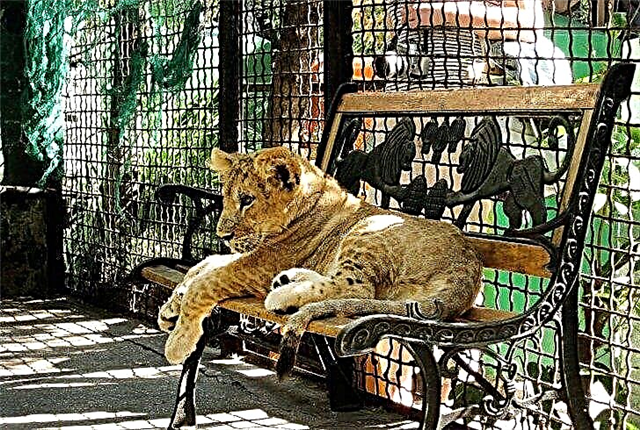
Yalta crocodilarium
The place where the largest crocodile population in Russia and Ukraine is kept. The crocodilarium arose due to the fact that in 2009 several dozen Nile crocodiles were born in the Alushta Zoo, and there was nowhere to put them. Then the idea arose to create a separate zoo for them. Several species of crocodiles live in the Yalta crocodilarium: African, Cuban, Pacific crocodiles, as well as smooth-faced caimans.

Winery "Massandra"
The enterprise was founded at the end of the 19th century by Prince Lev Golitsyn, who remained in history as the main Crimean winemaker. Massandra was the first Russian winery. Several hundred thousand bottles are kept in its basements. The winery has its own vineyards and three factories producing high quality grape drinks. Dry, dessert, semi-sweet and strong wines are produced under the Massandra brand.

Mount Ai-Petri
During the domination of the Greeks in the Crimea on the top of Ai-Petri was the monastery of St. Peter. This is where the name of the mountain comes from. Ai-Petri is the most picturesque and most visited mountain in Crimea; a cable car with a length of about 3 km leads from the village of Miskhor to the peak. It was launched in 1988. The cable car ride is a popular tourist attraction. In high season, long lines of people wishing to climb Ai-Petri line up at the entrance.

Cable car "Yalta - Gorka"
The old Yalta cable car with a length of about 600 meters. The path along it takes no more than 12 minutes. From the cabins of this cable car you can look at Yalta from above. There is an observation deck and a cafe at the terminal station. The path runs between narrow city streets, so it feels like you can reach some of the windows with your hand. The Yalta-Gorka cable car has been operating for several decades.

Seaside park named after Gagarin
Landscape park of the mid-20th century. It occupies a very picturesque area on the coastal slopes of Yalta. The park houses hotels, former and existing sanatoriums, a medical resort. The natural diversity of the park is about 100 species of trees and shrubs. Here you can walk among cypress alleys and pine groves. Fragrant roses bloom on the lawns of the park until the first cold weather.

Yalta embankment
Developed coastal area with a length of about 1000 meters. There are restaurants, summer verandas, shops, attractions, pleasure boats on the pier. As in any southern city, the embankment is the center and core of the resort life. In the summer months, the traffic does not stop here for a minute - tourists stroll slowly, music sounds from the cafe, guides advertise their services and invite guests for boat trips.

Nikitinsky Botanical Garden
The garden was founded at the beginning of the 19th century; it is one of the oldest scientific centers for the study of flora in Russia. A rich plant gene pool is stored and reproduced here - several thousand species of fruit trees, ornamental shrubs, grasses, flowers. This diversity has been preserved as a result of the painstaking work of the scientists of the Nikitinsky Botanical Garden over two centuries.

Tsar's (Sunny) trail
A 6.7 km pedestrian path that runs from the Livadia Palace to Cape Ai-Todor in the village of Gaspra. It is a wide trail along the rocky coast among pine groves. There are several observation platforms on the trail, from where a beautiful view of the Black Sea opens. The royal trail was built at the very beginning of the 20th century. The imperial family used it for walks. Nicholas II often walked here thinking about the fate of Russia.

Uchan-Su waterfall
From the Crimean Tatar language "Uchan-Su" is translated as "flying water". The waterfall is located in the vicinity of Yalta. The drop height of the water jets is about 100 meters. Uchan-Su is a rather powerful water stream that thunders with such force that it can be heard for hundreds of meters around, all other sounds are drowning in the roar of the rapids. In the spring months, after the snow melts or after heavy rains, the waterfall gains its maximum strength.

Yalta lighthouse
The lighthouse was built in the 19th century on the site of the former signal tower. The structure has always played an important role for shipping, as it was a reference point for ships. The lighthouse still greets ships with signal lights, preventing them from colliding with each other or breaking on the concrete ledges of the embankment. Nowadays, the lighthouse tower is ranked as a historical monument.



